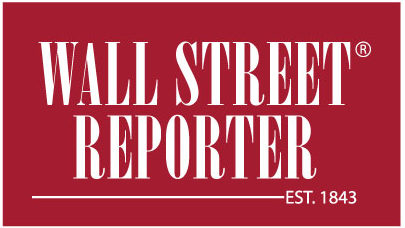CEO Neil Blumenthal:
“…We are as excited about our business and category as when we first started 12 years ago. As many of you know, our category is different from other consumer categories. Our core product, eyewear, is a combination of a health product and a fashion accessory. We have a unique responsibility to provide vision while amplifying one’s identity and style. We are fortunate to operate in a large and growing market, $160 billion globally and $44 billion in the U.S. alone and one that provides essential products and services that are purchased in both strong and weak economic environment.
Several factors contribute to this growth and durability. First, most people need vision correction, with 76% of adults using some form of vision correction in 2021. Second, there is a natural replenishment cycle as prescriptions change or as people update their fashion preferences. Further, there are several macro factors contributing to rising vision correction needs and a steady influx of new customers who expect an exceptional vision care experience from an aging population and increased screen time usage to the acceleration of e-commerce penetration and increasing prominence of telehealth. These trends support expectations that the industry will continue to grow and continue to become more favorable to our omni-channel approach. This is obviously exciting for us at Warby Parker. Despite being one of the only optical retailers to grow in 2020 and then accelerate that growth to 37% in 2021, reaching $541 million in revenue, we still just represent 1% of the U.S. market.
Another optical industry dynamic that makes it particularly appealing to our vertically integrated business model is that roughly 50% of the market is served by independent eye doctors and their optical shops that purchase frames and lenses wholesale and then resell them. The other half of the market is served by retail chains. And of that 50% of the market that are chain stores, roughly one-third is owned by one company. Customers come to Warby Parker often after spending significantly more on their glasses, because they either bought them from an overpriced optical chain or an independent optometry practice.
The other interesting dynamic of our industry is the prescription nature of the product. You need a valid prescription to buy glasses and contacts. Industry-wide, approximately 70% of people buy glasses and contacts in the same location they have an eye exam. This benefits us as we open up more stores with exam suites and optometrists. However, sales are negatively impacted when customers are not able to obtain prescriptions from us or their local optometrists due to Omicron or other variants. While the prescription dynamic protects incumbents by providing barriers to entry in normal times, it leads to a slower ramp up than other categories after a COVID surge.
In spite of COVID, the eyewear market is poised to continue to grow faster than GDP, with an outlook of a 5.3% CAGR from 2022 to 2025. If there is one phrase that you hear repeated in the offices of Warby Parker, its sustainable growth. Our management philosophy is to drive predictable growth while expanding margins and delivering exceptional customer experiences to ensure future growth. Our long-term outlook remains the same: We plan to grow revenue consistently at 20% or more, maintain healthy gross margins of 58% to 60%, gain leverage and expand adjusted EBITDA margins 100 to 200 basis points per year to achieve 20% plus adjusted EBITDA margins. We also plan to continue to make appropriately sized investments in technology and in our team to ensure exceptional customer experiences that result in a net promoter score greater than 80.
In 2022, we anticipate growth consistent with our philosophy of continued sustainable growth. We expect to grow top line 20% to 22% to $650 million to $660 million. Ahead of our direct listing in September before the onset of Omicron, we provided a framework of 2022 net revenue growth of at least 25%. We arrived at our current range of 20% to 22% growth after taking into account the estimated $15 million impact from Omicron in Q1 and assuming our stores reach 90% of pre-pandemic levels in Q2 and full productivity in Q4 based on the recovery curves we observed from the onset of COVID and from the emergence of Delta.
We expect our gross margins to remain consistent at 58% to 60%. And we anticipate that we will improve adjusted EBITDA 100 to 200 basis points. And of course, we expect to maintain a net promoter score at or above 80. We see tremendous opportunity in front of us fueled by the natural tailwinds – we have as a business having launched purely online selling just single vision prescription glasses. We expect most of our 2022 growth to be driven by our retail channel as traffic and sales productivity rebound, particularly for our 63 urban locations whose productivity is currently 15 points lower than our suburban locations. We also plan to open 40 new stores in 2022 and end the year with 201 locations.
Last year, we commissioned a third-party study that concluded our retail footprint has room to expand to over 900 retail locations in the U.S. while maintaining our best-in-class four-wall economics. This is still a fraction of the 41,000 optical shops that exists today. As we continue to expand our product and service offering, we believe this will also expand our store footprint opportunity. And of course, we will continue to serve customers via our leading e-commerce channel using unique tools like our Virtual Try-On to make the shopping experience fun and convenient, both online and offline…”
